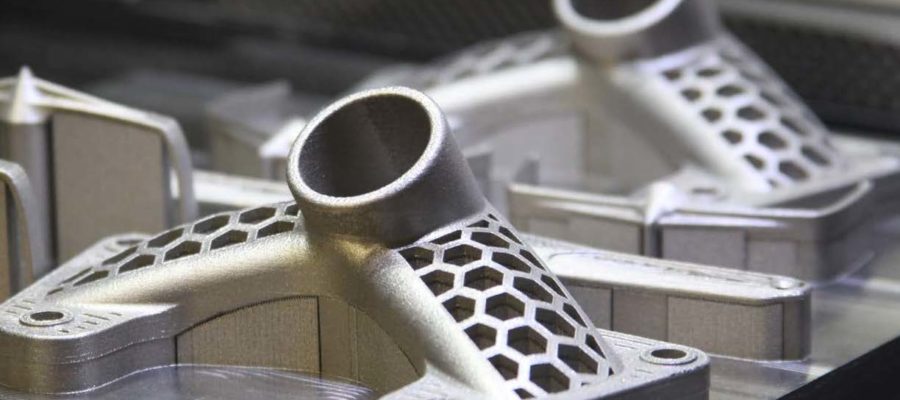The roots of powder bed fusion reach back to the beginnings of additive manufacturing processes. Originally, when someone used the term “3D printing” they were referring to the process of applying layers of binding, or fusion, agents to a powder bed, using inkjet printer heads.
Today, powder bed fusion (PBF) methods include other means of fusing powder materials, including lasers or electron beams as heat sources.
In typical PBF processes, 3D CAD models are “sliced”, with each slice outlining the path that the binding agents or heat sources are applied to a layer of powder inside the build chamber of the 3D printer.
After each layer is complete, another layer of powdered material is applied across the build platform to be fused. Unused powder helps support the part as it is built layer by layer. When the part is complete, the unused powder is removed from the part in the post-processing step.
PBF is known for its ability to create highly detailed nylon and metal parts, which also make it a popular choice for rapid prototyping complex parts.
Types of Powder Bed Fusion Additive Manufacturing Processes
Selective Laser Sintering (SLS)
Laser sintering fuses thermoplastic powder with heat (stopping the process before the material fully melts) from a high-powered laser. A versatile and popular 3D printing technology, the main characteristics of SLS parts are durability, lightweight and heat and chemical resistance. SLS parts are commonly used in aerospace, wearables, machine components and production tools.
Direct Metal Laser Sintering (DMLS)
The main difference between SLS and DMLS technologies is the use of metal powders in DMLS versus powdered nylon in SLS. DMLS offers designers more freedom to create parts to a level of detail and complexity that would make them difficult or impossible to create using traditional casting or machining processes.
HP Multi Jet Fusion (MJF)
By applying processes that originally made 3D printing a viable manufacturing process, HP Multi Jet Fusion gives designers options for creating parts of the same high detail of other PBF technologies for a lower cost. Using durable nylon 12 PA, MJF parts can be used for everything from rapid prototyping and testing, to thin-walled production parts and watertight applications.
If you want to learn more about powder bed fusion technology, check out our recent article “Additive Manufacturing Technology – Powder Bed Fusion”.
